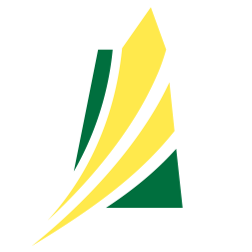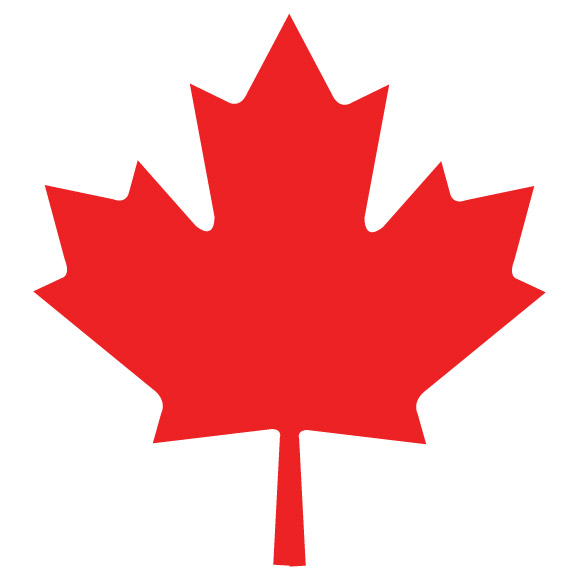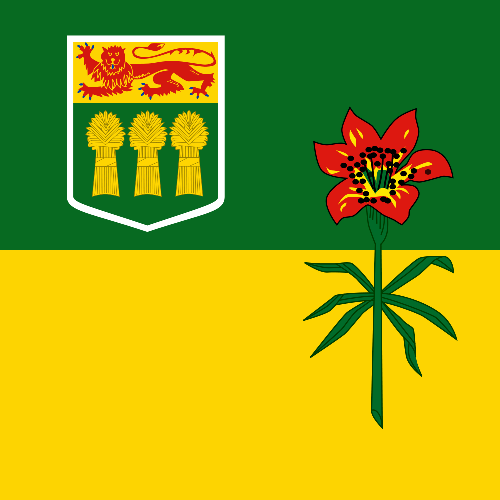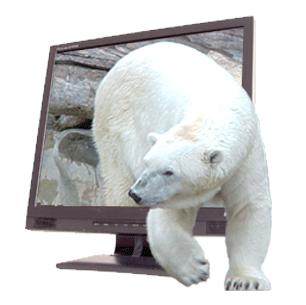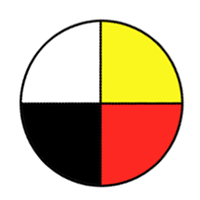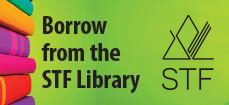R105323
During this Broadcast, students will explore the complex world of AI deep fakes. Through collaborative learning and interactive activities, they'll explore the technology behind deep fakes, understanding how artificial intelligence can be used to create highly convincing but fabricated content. Additionally, students will critically examine the ethical implications of deep fakes, while exploring real-world examples of its usage and impact. The session will last 45 minutes, providing a comprehensive learning experience for all participants.
Record posted/updated:
May 29, 2025
R054783
This video explains decomposition, one of nature's most important processes. For two months in the summer of 2011, a glass box containing food laid out from a typical kitchen and garden for a family of four was left to rot in full public view within Edinburgh Zoo. In this resulting documentary, presenter Dr. George McGavin and his team use time-lapse cameras and 3-D photography to capture the way in which moulds, microbes and insects are able to break down our everyday things and allow new life to emerge from old. The film reveals the incredible science of taphonomy, discovering what happens to organic matter as it starts to decompose. Whole new ecosystems of life invade, each more complex than you would ever expect. The micro-organisms involved in turning milk sour, lactobacillus, are highlighted; in addition to pseudomonas, micro-organisms that make meat smell; and botrytis cinerea, those that make fruit and vegetables go velvety grey.
Microbiology gives us insight into the part played by bacteria, yeasts and fungi. Biochemistry reveals how the chemical processes in living organisms cause change. Entymology reveals the vital role of insects in the great cycle of decay. The video also explores the incredible science behind preservation, from new food packaging and chemical additives to UV radiation and osmotic pressures.
Record posted/updated:
July 8, 2024
R071700
Using black-and-white photography, author David Baird illustrates various rock formations from across Canada and the world. Pattern, texture and detail in the photographs provide examples of how rock is formed and shaped by the forces of nature. Brief descriptions accompany each picture, supplying a context and focus for viewing.
Record posted/updated:
November 28, 2018
R052964
This video examines the salmon industry. The Heiltsuk and Nuxalk First Nations communities consider themselves "The Salmon People." Salmon provides sustenance, income and ceremonial use. This way of life is threatened by salmon farming and logging practices. Large international corporations set up salmon farms without consulting the First Nations. Both the Heiltsuk and Nuxalk have protested salmon farming and the clear-cut logging practices taking place in ancestral territories.
Record posted/updated:
July 10, 2019
R052013
Below Zero is an instructional resource for educators teaching about natural resources within winter and frozen environments. Designed to complement the Project WILD Activity Guide, the activities in Below Zero promote awareness, knowledge, skills and responsible behaviour towards wildlife in winter environments. The activity guide contains four sections: Awareness and Appreciation, Habitat and Ecological Principles, Adaptation and Responsible Human Actions. Teachers are encouraged to select and adapt activities from this resource that align with curriculum outcomes and meet the needs of students.
Below Zero activity guides are free to teachers attending a Below Zero workshop, often offered in conjunction with Project WILD workshops. These workshops provide an opportunity to experience the activities and to plan how to use them in the classroom. A modest registration fee covers workshop materials and expenses.
Book
Free to workshop participants
Record posted/updated:
July 8, 2024
R105333
In this broadcast, students will delve into the careers of the future, using the Sustainable Development Goals as a guiding framework to pinpoint current global challenges. They will contemplate potential emerging technologies capable of addressing these challenges and craft job titles that encompass the requisite skills for success in these yet-to-be-realized professions. The session will last 45 minutes, providing a comprehensive learning experience for all participants.
Record posted/updated:
May 29, 2025
R047212
The Earth in Action Series is a four-part video program that examines the Earth's crust. Each program is 20 minutes in length and focuses on key concepts and terminology related to the topic. Topics include: Forces Shaping the Earth, Plate Tectonics, Volcanoes and Earthquakes and Weathering and Soils.
Each binder contains suggested teaching ideas, student activities and key terminology. Extra features of the DVD include indexes, labelled slides, glossary, animations, English subtitles and an iMovie project.
Record posted/updated:
July 8, 2024
R071626
In late February, an earthquake strikes Chile killing more than 800 people. Two months before another earthquake kills more than 220,000 people in Haiti. Why did so many more die in one country and what makes the earth move?
Record posted/updated:
November 28, 2018
R071565
This video examines echinoderms, the branch to which Chordates also belong. Five classes are highlighted: sea stars, brittle stars and basket stars, sea urchins and sand dollars, sea cucumbers and crinoids. Phylum characteristics and biological details are provided.
Record posted/updated:
November 28, 2018
R049385
This video introduces students to some of the fundamental principles in ecology - the study of how living things interact with each other and with their environment. The different types of living and non-living things found in an ecosystem are discussed. Examples of the interaction of living and non-living factors are provided. Other terminology includes: ecology, ecosystem, community, population, habitat, niche, biotic factors, abiotic factors, producer, consumer, decomposer, predator, prey, energy and food chain.
Record posted/updated:
November 28, 2018
R047215
The Ecology Series is a four-part video program that looks at ecology and ecosystems. Each program is 20 minutes in length and focuses on key concepts and terminology related to the topic. Topics include: The Biosphere, Ecosystem Dynamics, Natural Cycles and People and the Environment.
Each binder contains suggested teaching ideas, student activities and key terminology. Extra features of the DVD include indexes, labelled slides, glossary, animations, English subtitles and an iMovie project.
Record posted/updated:
July 8, 2024
R047220
The video series may be used to address outcomes at different grade levels. Rather than showing the program in its entirety, teachers are encouraged to select segments for viewing that directly relate to specific unit outcomes.
Please see the related resources below.
Record posted/updated:
November 28, 2018
R052176
Fall Comes to Lac La Ronge is a 15 minute video produced by Randy Johns and Richard Frisky for KCDC. It details the cycle of the seasons as they slowly transform from the glory of summer to the splendour of fall. How various life forms prepare for fall is highlighted, including the migration patterns of pelicans and bald eagles. The film describes the beaver, how they use the trembling aspen trees in the region, as well as Grey Owl's conservation efforts to protect them. The film also features the track The Silent Scream by Ion.
Record posted/updated:
November 28, 2018
R054578
This video series introduces students to the history of our continent. Using a range of techniques from 3-D animations to filming from a helicopter, the changes in Canada's geology are uncovered.
A teacher's guide is available.
Please see the related resources below.
Record posted/updated:
July 8, 2024
R101038
Gizmos is a website of inquiry-based, online simulations for topics in Math and Science from Grades 3-12. A selection of simulations is available as part of the free trial, but access to the full library of simulations requires a paid subscription. A request must be submitted by email to receive a quote for a membership. Examples of the topics in the library include: ecosystems, chemical bonding and genetics.
Record posted/updated:
September 1, 2020
R043349
This video program explores the characteristics of a grassland biome. It illustrates the effect of climate on soil type, vegetation and wildlife. Abiotic and biotic factors are introduced and a straightforward demonstration clarifies their relationship. The program addresses agricultural practices that support or destroy grassland habitats. Plant adaptations and food chains are also discussed.
Teachers may wish to use other programs from the Biomes of the World in Action series. Program titles include Coniferous Forest, Deciduous Forests, Deserts, Freshwater Ecosystems, Marine Ecosystems, Rainforest Biomes and Tundra.
Record posted/updated:
July 8, 2024
R071572
This video examines the great plains on earth. The great plains cover more than one-quarter of the land on the planet and at the heart of the plains is grass. Grass feeds wildlife around the planet. Great plains described in this program include the African savanna, the Asian steppe, the Arctic tundra and the North American prairie.
CD/DVD
$144.95 (complete Planet Earth series)
Record posted/updated:
July 1, 2020
R041434
Written by two high school science teachers, this resource contains practical techniques to promote students' comprehension of science concepts through writing. Focus is placed on creative expression to deepen understanding of scientific concepts, rather than on memorization of facts and formulas. Topics include lab report writing, open-ended and critical thinking exercises, student research papers, managing the paperwork and portfolio assessment.
Record posted/updated:
March 7, 2017
R071658
Scientists in various fields of life science explain the flow of energy through an ecosystem. They discuss biotic and abiotic factors, as well as the roles of producers and consumers. The DVD encourages viewers to consider the impact of humans on ecosystems and on biogeochemical cycles such as the carbon cycle, the nitrogen cycle, the phosphorous cycle and the hydrological cycle.
Record posted/updated:
July 31, 2019
R071705
Author Donna O'Meara uses her expertise as a volcano researcher, writer and photographer to take readers on an exploration of volcanoes. She explains the formation and different kinds of volcanoes.
Record posted/updated:
November 28, 2018
R051307
This video will assist students to understand and differentiate between mixtures, solutions, elements and compounds. Additional topics discussed include elements, pure substances, properties, atoms, molecules, compounds, types of mixtures, suspension, colloid and alloy.
Record posted/updated:
December 3, 2021
R105354
Join us for a unique opportunity, where a Let’s Talk Science education specialist will guide you and your class in a co-learning experience. During this 45-minute session, you’ll learn easy-to-implement strategies around Digital Literacy and the Sustainable Development Goals. At the same time, students will contemplate potential emerging technologies that address future challenges and craft job titles encompassing the requisite skills for success.
Record posted/updated:
May 29, 2025
R038760
This booklet offers general information on aquatic ecosystems, their functions and the important roles that native plants play within them. This resource focuses on aquatic ecosystems and the associated native vegetation in an agricultural context. Included are a table of contents, a glossary, lists of resources and Saskatchewan contacts.
Book
Contact the NPSS for a free copy
Record posted/updated:
July 31, 2019
R071683
Natural Neighbours: Selected Mammals of Saskatchewan focuses on various mammals found in Saskatchewan and describes their appearance, habits, food, habitat, survival strategies, ecological relationships, status and range. The mammals chosen for the book tend to be widely distributed in the province, are well-known by the public and are most likely to be seen. The book also promotes a better understanding of the human relationship with the environment.
The book was compiled by and co-published with Saskatchewan Environment and Resource Management.
Record posted/updated:
July 8, 2024
R071706
This video program shows how humans can coexist with predators such as wolves, often by reintroducing species to their natural habitats. Ecological, economic and social factors necessary for the conservation of carnivore species are identified, as well as the necessity for protecting large, connected expanses of land vital to their survival. The DVD shows how age-old myths and misperceived notions about carnivorous species devastated these populations and brought many to near extinction when settlers made their way west. Viewers learn about the role of carnivores in the ecosystem and the need to be protected.
This program is closed-captioned for people with hearing disabilities.
Record posted/updated:
July 8, 2024
R011314
This video series examines an urban wetland. Jesse and Seka pursue a science project on biodiversity. They decide to survey the life in a cattail marsh to build a case to preserve the wetland. Through each episode in the series, Jesse and Seka learn about the species in the wetland, how to take data to substantiate their claims, how to classify the various species, how the various species adapt to live in the wetland and present their findings to city councillors and the land owner.
Please see the related resources below.
Record posted/updated:
July 2, 2020
R053168
Two budding scientists, Jasmine and Sam, investigate scientific cases. A make-shift lab is the starting point for their adventures in science.
Please see the related resources below.
Record posted/updated:
August 29, 2019
R071709
Written by Saskatchewan authors Bonnie Lawrence and Anna Leighton, and published by Nature Saskatchewan, this full-colour book celebrates the Western Red Lily, the floral emblem of Saskatchewan. A copy of this resource was distributed to schools in Saskatchewan in March 2006.
Record posted/updated:
November 28, 2018
R103288
This Perimeter Institute kit uses student activities to highlight the creative, inquisitive, communicative and collaborative aspects of the scientific process. Perimeter Institute kits are available free of charge; this kit includes a teacher's guide, 8 photo cards, a DVD with short videos that support the activities and a CD-ROM with editable versions of the students worksheets found in the guide.
Record posted/updated:
November 25, 2018
R041220
The 2002 Project WILD Activity Guide features activities designed to develop awareness, knowledge, skills and the environment. Through many of the activities, students are engaged in informed decision making in which they consider the impact of their actions on the ecosystem. Each multigrade activity includes objectives, method, background information, materials and procedures, as well as extension and evaluation ideas. The activity guide contains seven sections: Awareness and Appreciation; Diversity of Wildlife Values; Ecological Principles, Management and Conservation; People, Culture and Wildlife; Trends, Issues, and Consequences; and Responsible Human Actions. Teachers are encouraged to select and adapt activities that align with curriculum outcomes and meet the needs of students.
Project WILD activity guides are free to teachers who attend a Project WILD workshop. These workshops provide an opportunity to experience the activities and to actively plan how to use them in the classroom. A modest registration fee will cover workshop materials and expenses.
Book
Free to workshop participants
Record posted/updated:
July 8, 2024
R071687
This safety resource brings information together that is needed by administrators, planners, teachers and support staff to help them make sound decisions regarding science safety. It supports planning and action by providing information on safety legislation, standards and concerns, as well as example procedures for eliminating or minimizing hazards. A copy of this handbook was sent to all schools with Grades 8-12. Because workplace standards may change over time, users of this resource should check for updated information wherever there are references to national or provincial legislation.
Record posted/updated:
January 2, 2019
R040816
The posters in the Saskatchewan Native Wildlife Series feature illustrations of the diverse wildlife found in our province. Information about each animal, including physical features, food, habitat and babies, are provided on the poster as well as in accompanying notes for educators. Individual titles in the series include: Grouse, Partridge and Pheasants of Saskatchewan; Wild Cats and Dogs of Saskatchewan; Wild Hoofed Animals of Saskatchewan; Wild Rabbits and Hare, Big Rodents and Bear of Saskatchewan; and Wild Weasels of Saskatchewan.
Record posted/updated:
December 9, 2018
R035315
Over one hundred Saskatchewan wildflowers, divided into five broad groups, are described in this resource. Each of the one-page layouts contains notes on the edibility and medicinal uses, blooming times, and habitats where the plants are found. As well, there is a close-up colour photograph to assist with identification.The introduction includes tips for identifying wildflowers and how to distinguish them from noxious weeds and dangerous wildflowers. An index is provided.
Record posted/updated:
January 4, 2019
R071711
This booklet presents information on Saskatchewan's native prairie. It briefly examines the impact of settlement on the region and the importance of the prairie landscape to culture and heritage. Maps, charts and graphs, focusing on the southern half of the province, illustrate prairie ecoregions, vegetation cover and soil capability. Threats to the prairie landscape are identified, as well as conservation initiatives. Numerous sources of additional information are provided.
Record posted/updated:
July 31, 2019
R071690
This professional resource shows how science notebooks can be used with inquiry to extend students' understanding of scientific concepts. It describes the components of a science notebook and outlines the role of the teacher in implementing, developing and assessing science notebooks. This resource helps to establish links among science content, the process of inquiry and the role of literacy.
Record posted/updated:
June 22, 2018
R048062
Science for English Language Learners is designed to assist teachers to implement inquiry-based science while increasing learning opportunities for English Language Learners (ELL). The book provides strategies for planning, teaching, assessing and extending learning. While the book is specifically designed for ELL students, many of the strategies can benefit all students in the classroom. Included in the book are lesson plans which include standards and objectives, background, materials, activities and a summary. Depending upon the grade level, charts and diagrams are also included in the lesson plan. The lesson plans provided will need to be adapted to address the Saskatchewan science curriculum outcomes.
The authors also provide educators with a sense of how it will look when strategies are incorporated for teaching English Language Learners in the classroom. If an educator is unfamiliar with English Language Learners, this book provides strategies for working with ELL students, how a second language is learned and connecting with families. Strategies to incorporate into daily teaching are discussed and while this is a science-related book, these strategies could be implemented in any area of teaching.
Record posted/updated:
July 8, 2024
R071566
Part of the animal phyla, the sponges' structure, function, classification and ecological roles is examined in this video. Using animations and time-lapse microscopy, students will understand the developmental, ecological and evolutionary nature of sponges.
Record posted/updated:
November 28, 2018
R071695
This resource contains 50 interdisciplinary hands-on learning activities that promote critical thinking about sustaining ecosystems, living sustainably and examining values related to environmental issues.
Record posted/updated:
August 29, 2019
R071670
Written in Swampy Cree and English, this book provides students with an appreciation of the diversity and fragility of the prairie wetland ecosystem. Mr. Carriere describes the bulrushes through the seasons and how the various animals, insects and birds rely on the bulrushes and ponds for survival. The book demonstrates that traditional First Nations knowledge is parallel to Western science.
Record posted/updated:
November 28, 2018
R051852
In this video, students will examine how a substance, such as water, exists in different phases. The examples provided in the video illustrate how phase changes occur. Student will learn about states of matter, particles, solid, liquid, gas, plasma, melting, freezing, vaporization, boiling, evaporation, condensation and sublimation.
Record posted/updated:
December 3, 2021
R055401
Kiran explores the environmental problems threatening her local wetland. For her birthday, Kiran is given a diary by her grandma. She is invited by her grandma to help her and a conservation crew to restore a bog in Vancouver, BC. Using poetic form, Kiran expresses her thoughts about the bog and the various life species that live there. Through the text, students should be inspired to help protect wetlands in their local communities.
Record posted/updated:
November 28, 2018
R020951
This exploration of Saskatchewan's ecoregions and ecozones emphasizes the relationship between the environment and its inhabitants. The book provides a description of the physical setting and biological features of each ecozone including information on climate, landforms and soils, groundwater, vegetation and wildlife. Black-and-white photographs, line drawings, tables, charts and maps illustrate the resource. A glossary is included.
Record posted/updated:
November 28, 2018
R046970
Scientific disciplines such as astronomy, ecology and engineering have been influenced by the knowledge learned from First Nations people. Oral traditions pass down knowledge and teach the old ways to new generations. There are many examples of First Nations contributions to science and Canadian culture. The DVD can be shown in sections to address the outcomes in the science curriculum.
Record posted/updated:
November 28, 2018
R071703
This resource looks at the biodiversity found in Saskatchewan's Great Sand Hills and at the pressures for development of the natural gas resources in this region.
Record posted/updated:
November 28, 2018
R071696
This resource covers many topics in the renewed science curriculum. Using the ancient Greek division of the world using spheres, the authors examine the atmosphere (air), pedosphere (land), biosphere (living), hydrosphere (water), cryosphere (frozen) and geosphere (subterranean). The animals, plants and landforms that exist within each sphere are described. Photographs illustrate to readers the diversity of life within the sphere. The book includes a table of contents and an index.
Record posted/updated:
November 28, 2018
R071697
Slavin shows the process of how objects are changed from raw materials to the finished products. He uses common items that students are familiar with, such as baseballs. Each two-page spread describes how the object is made by breaking the process down into steps. Illustrations complement the text and show the technology behind the science. Slavin demonstrates the connection between science and technology in making objects. The book includes a table of contents, a glossary, suggestions for further research and an index.
Record posted/updated:
January 16, 2025
R039544
This field guide presents identification keys, descriptive information and colour photographs of water and wetland plants in Saskatchewan, Alberta, Manitoba and the northern United States. It provides a relevant, easy-to-use guide for field trips to wetland ecosystems.
Record posted/updated:
November 28, 2018
R052953
In this video program, students learn about the seven major biomes on Earth. They also discover the symbiotic relationships between life species, how plants and animals have adapted to survive in the biomes and that individual biomes exist within each major biome.
Record posted/updated:
November 28, 2018

